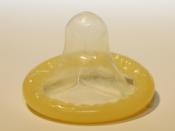Controlling the process of reproduction is the only way to deal with the growing population of the world. But the first steps are still bringing forward the idea of using contraception and making it available to the people. Unfortunately, this knowledge and methods of contraception is not available in all societies and cultures.
The definition of contraception: Intentional prevention of conception or impregnation through the use of various devices, agents, drugs, sexual practices, or surgical procedures. There are both long-term and short-term methods of contraception. Let's start by talking about a long term contraceptive procedure known as sterilization, which unfortunately offers no protection against any kind of STDs (sexually transmitted diseases). Both men and women can be sterilized. Sterilization involves a minor operation. In a man, the sterilizing process is known as vasectomy and it where the sperm ducts are tied off and cut by the surgeon. The man can still ejaculate as the ducts are cut out below the seminal vesicles which produce seminal fluid, but his semen with not contain any sperms.
The woman undergoes similar process called Laparotomy, where the fallopian tubes, also known as the oviducts, are tied off and cut. This prevents the sperm from reaching the egg meaning that fertilization cannot take place and the cell cannot develop into an embryo. Although some sterilization operations can be reversed, this is not usually the case so a man or woman who is sterilized has to be absolutely sure that he or she does not want any more children.
Another long-term contraceptive method is using Intra-uterine devices (IUD), or coils. This method is used by approximately 139 women worldwide. They are usually small metal or plastic stripes bent into a loop or coil, and are inserted and retained in the uterus. This prevents possible implantation of...



Very good!
Excellent essay with a lot of information...
By the way "Another long-term contraceptive method is using Intra-uterine devices (IUD), or coils. This method is used by approximately 139 women worldwide"...139 women only !?!? or was it a typing mistake??
3 out of 3 people found this comment useful.